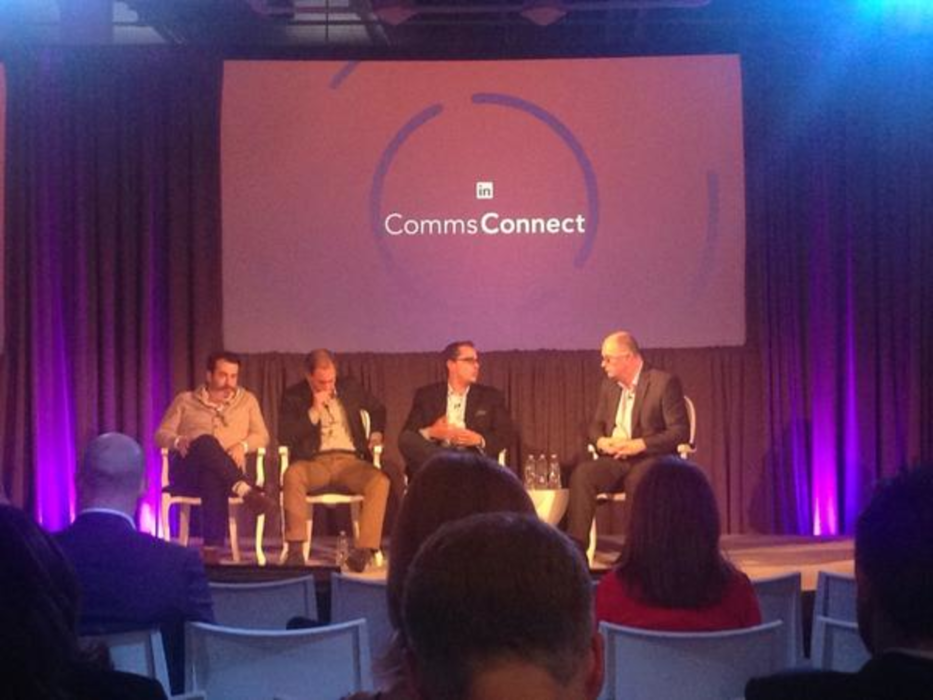The natural frenemies of the media world squared off against each other at LinkedIn’s recent CommsConnect event for PR pros, as they debated the value of content produced by brands.
Moderated by PRWeek US editor-in-chief Steve Barrett, the panel discussion titled “Changing Tide of Communication: Getting Content Right” aimed to highlight the efforts and results brands were getting by producing their own content. However, the sole journalist on the panel didn’t share everyone else’s enthusiasm for the practice.
Veteran writer Adam Lashinsky of Fortune remained unconvinced that content produced by brands served any purpose other than “propaganda,” despite a spirited defense by Alex Jutkowitz, chief global strategist of PR consultancy Hill+Knowlton Strategies.
“I don’t mean for the following to sound self righteous or pompous, but you two are in the propaganda business and you’re well paid for it,” said Lashinsky, gesturing towards Jutkowitz and fellow panelist Don Bulmer, VP of communications strategy at Shell. “Readers may well like the content they see from a brand, they may find it useful, but they do understand where it’s coming from.”
Jutkowitz countered that not all branded content was the same, explaining his concept of content falling on a spectrum. “On one end you have heavyweight content, which is purely about the company and its products, and then on the other end you have lightweight content, which is purely to entertain and engage consumers,” said Jutkowitz. “What we need to produce everyday is middleweight content, a bargain in the middle where we’re going to give you some knowledge, and you’re going to know exactly where its coming from.”
Jutkowitz said middleweight content is what gets picked up by media outlets and other publications because it is a peer-to-peer distribution to the traditional media properties. “Earned media used to be filtered, because it was going through a journalist,” said Jutkowitz. “Now it’s earned and unfiltered, and that’s why it has to have a higher standard.”
He added, “If it’s propaganda, it’s not going to make it through.”
Although Jutkowitz said getting branded content picked up by major media outlets was a “reality, not a goal,” at least one member from the audience admitted to struggling with the practice. A content marketer from Cisco asked Lashinsky what her company needed to do to get its content picked up by a journalist like himself. Lashinsky admitted that as someone who had a bias against commercial content, he wasn’t the best person to target. “I wouldn’t try to reach me,” said Lashinsky. “I would be content with who you are reaching, and I would suggest reaching me in the other ways, such as the old fashioned way.”








